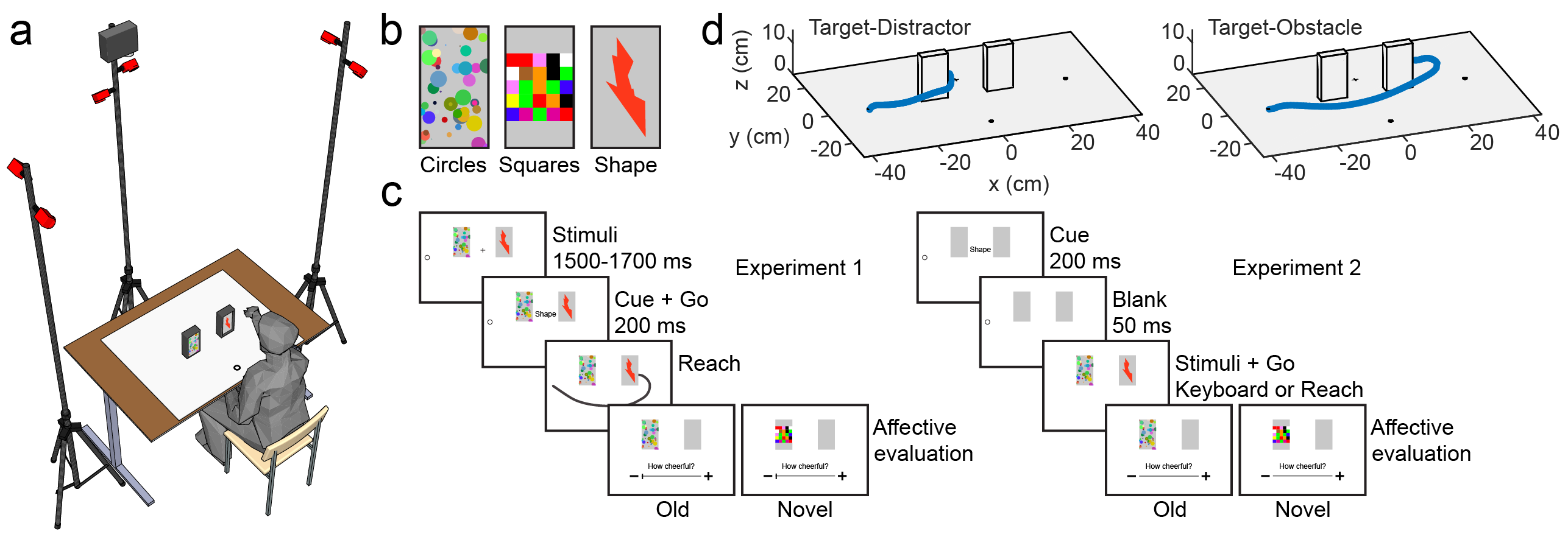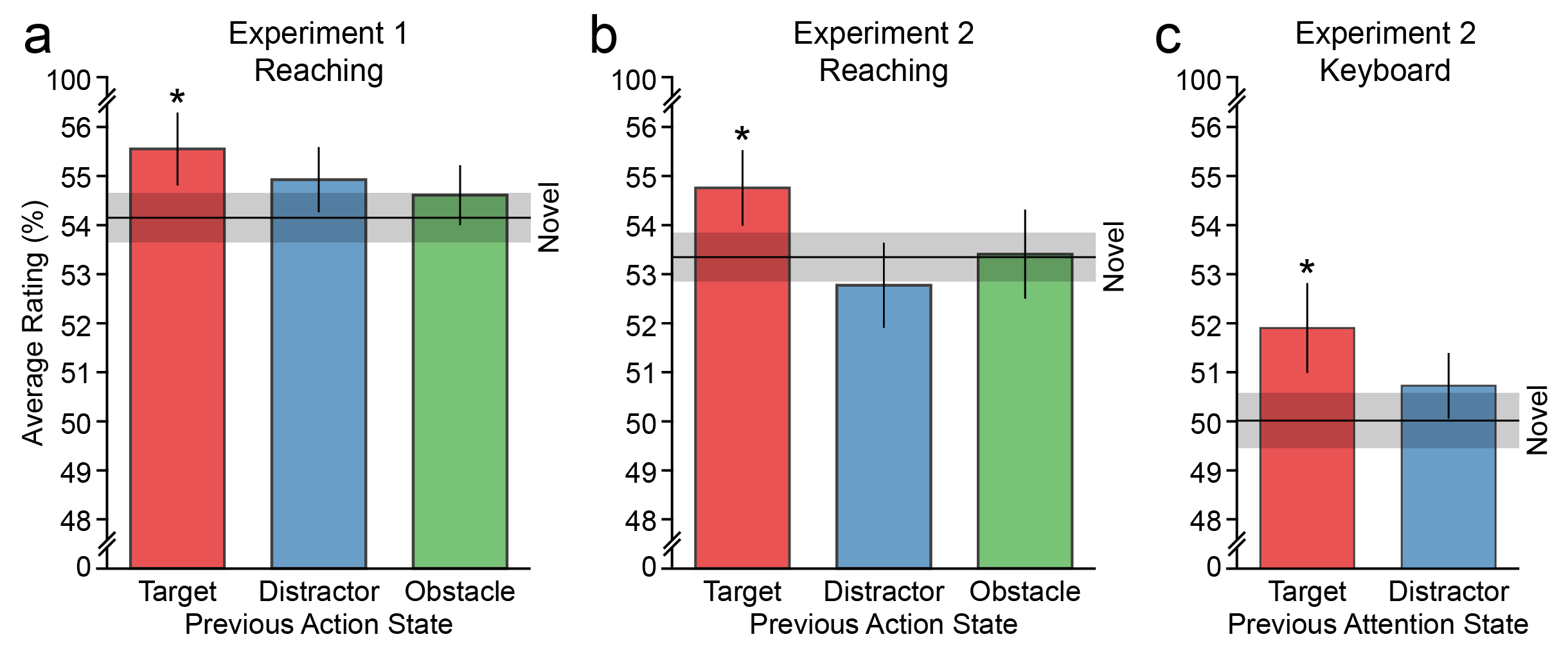Selective attention to real-world objects drives their emotional appraisal
Wispinski, N. J., Lin, S., Enns, J. T., & Chapman, C. S. (2021). Selective attention to real-world objects drives their emotional appraisal. Attention, Perception, & Psychophysics, 83(1), 122-132.
There is some evidence that images on a computer screen tend to be rated more positively after we attend to them. Similarly, images on a computer screen tend to be rated more negatively after we ignore them (e.g., “distractor devaluation”). These effects suggest that the attention system in the human brain is connected to the emotion (or valuation) system. This attention-emotion link might be a way to bias our behaviour in the future toward previously attended objects, and away from previously ignored objects.
We know that simply performing actions, like grabbing a cup of coffee on a desk, requires attention toward the object of interest. At the same time, irrelevant objects like a house plant near the desk must be ignored. Would ratings of the cup of coffee then increase, and ratings of the house plant then decrease?
We set up some experiments where people had to reach and grab one of two iPods depending on what image it was showing (“circles”, “squares”, or “shape”). Two experiments had people reach and grab the iPods, and one experiment had people respond with a keyboard on the table. After every action, we asked people to rate the images. Every image was procedurally generated—meaning every image was unique.

Below is a video of Experiment 1 during debugging. Thanks to Todd Handy for the use of his study room (the one with the climbing wall).
Infrared motion tracking cameras track the reflective ball on a participant’s right index finger. This allows us to track when a participant’s hand is where it is supposed to be (and also to provide a cool ratings slider on the table after every action). The question “How cheerful?” for ratings is adapted from an earlier study in the U.K.
One catch—what about obstacles? What if your hand needs to avoid a glass of water on the way to pick up the cup of coffee?
Some theories think that we need to pay attention to obstacles in order to move around them. Bumping into obstacles all the time is not very efficient, and potentially dangerous, so perhaps we need to pay particular attention to where they are. Under this theory, obstacles should be rated more positively after we move around them.
Other theories think that the brain actually attentionally suppresses obstacles when we move around them. This might sound strange, but this theory is supported by neuroimaging data of people grabbing objects in a MRI scanner. Under this theory, obstacles should be rated more negatively after we move around them.
What did we find?
In all three of our experiments, we found that images on the iPod participants grabbed were given a little positive bump in ratings (Targets, in red). Images on the iPod the participants did not grab (Distractors, in blue) did not change in ratings. And images on iPods that participants had to reach around and avoid (Obstacles, in green), did not change in ratings either.

So what?
We showed that just by interacting with real objects, our attitudes about these objects will subtly improve. You can imagine how our interactions over the course of a day might influence what we do later on.
There are several reasons why we think distractors and obstacles did not change, which you can read about in the paper if you are interested. Unfortunately, the jury is still out on whether the brain attends to, or ignores obstacles when we need to avoid them.
RIP to two different MacBooks that passed away over the course of this experiment:
My 2009 white polycarbonate MacBook (Lil’ Buddy #1).
Rich Sutton’s retired MacBook (Lil’ Buddy #2).
And thank you to Shihao, and many other undergraduate research assistants for helping with this project. Syncing 4 computers and a motion tracking system is not the easiest introduction to psychological research.
